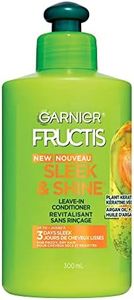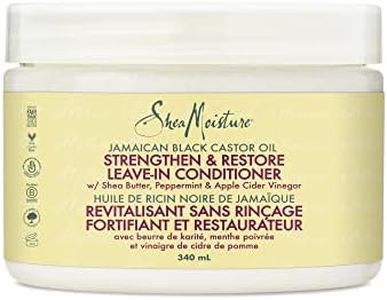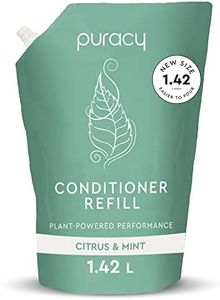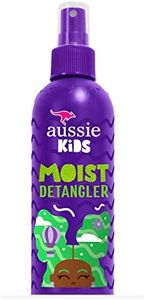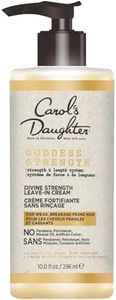We Use CookiesWe use cookies to enhance the security, performance,
functionality and for analytical and promotional activities. By continuing to browse this site you
are agreeing to our privacy policy
10 Best Leave In Conditioners
From leading brands and best sellers available on the web.Recommended lists
Buying Guide for the Best Leave In Conditioners
Choosing the right leave-in conditioner can make a big difference in the health and appearance of your hair. Leave-in conditioners are designed to be applied after washing and left in the hair without rinsing, providing ongoing moisture, protection, and manageability. The best product for you depends on your hair type, concerns, and styling habits. Understanding the key features will help you select a leave-in conditioner that meets your unique needs and helps you achieve your hair goals.Hair Type CompatibilityHair type compatibility refers to whether a leave-in conditioner is formulated for straight, wavy, curly, coily, fine, or thick hair. This is important because different hair types have different needs; for example, fine hair can get weighed down by heavy products, while thick or curly hair often needs more moisture. Products are often labeled for specific hair types, so look for one that matches yours. If you have fine or straight hair, opt for lightweight sprays or milks. For curly, coily, or thick hair, creams or richer formulas are usually better. Knowing your hair type is the first step to finding a product that will work best for you.
Moisturizing IngredientsMoisturizing ingredients are the components in a leave-in conditioner that help hydrate and soften your hair. Common examples include glycerin, aloe vera, oils (like argan or coconut), and butters (like shea butter). The importance of this spec lies in how much moisture your hair needs; dry or damaged hair benefits from richer, more hydrating ingredients, while normal or oily hair may need lighter hydration. If your hair feels dry, frizzy, or brittle, look for products with nourishing oils and butters. If your hair is easily weighed down, choose formulas with lighter moisturizers like aloe or glycerin.
Protein ContentProtein content refers to whether the leave-in conditioner contains proteins like keratin, silk, or wheat protein, which help strengthen and repair hair. This is important for people with damaged, chemically treated, or weak hair, as protein can help rebuild the hair structure. However, too much protein can make hair feel stiff or brittle, especially for those with healthy or low-porosity hair. If your hair is damaged or breaking, a leave-in with some protein can be beneficial. If your hair is healthy or feels stiff after using protein products, opt for protein-free formulas.
Frizz Control and SmoothingFrizz control and smoothing refer to the product's ability to tame flyaways and make hair look sleek. Ingredients like silicones, oils, and certain polymers help seal the hair cuticle and reduce frizz. This is especially important if you live in a humid climate or have naturally frizzy or curly hair. If frizz is a major concern for you, look for leave-ins that specifically mention frizz control or smoothing on the label. If your hair is already smooth or you avoid silicones, you may prefer lighter, silicone-free options.
Heat ProtectionHeat protection means the leave-in conditioner can help shield your hair from damage caused by styling tools like blow dryers, flat irons, or curling wands. This is important if you regularly use heat to style your hair, as it can prevent breakage and dryness. Some leave-in conditioners include heat-protectant ingredients, while others do not. If you use heat tools often, choose a leave-in that offers heat protection. If you air-dry your hair or rarely use heat, this feature may be less important for you.
Application FormApplication form refers to the texture and delivery method of the leave-in conditioner, such as spray, cream, lotion, or milk. This matters because different forms work better for different hair types and styling routines. Sprays are lightweight and easy to distribute, making them ideal for fine or straight hair. Creams and lotions are richer and better for thick, curly, or dry hair. Milks are a middle ground, offering light hydration with easy application. Consider your hair type and how you like to apply products when choosing the form that suits you best.
Scent and SensitivityScent and sensitivity refer to the fragrance of the product and whether it contains ingredients that might irritate sensitive scalps or skin. Some leave-in conditioners have strong fragrances, while others are fragrance-free or hypoallergenic. If you are sensitive to scents or have allergies, look for fragrance-free or gentle formulas. If you enjoy scented products, choose one with a fragrance you like, but be mindful of potential irritation if you have a sensitive scalp.


